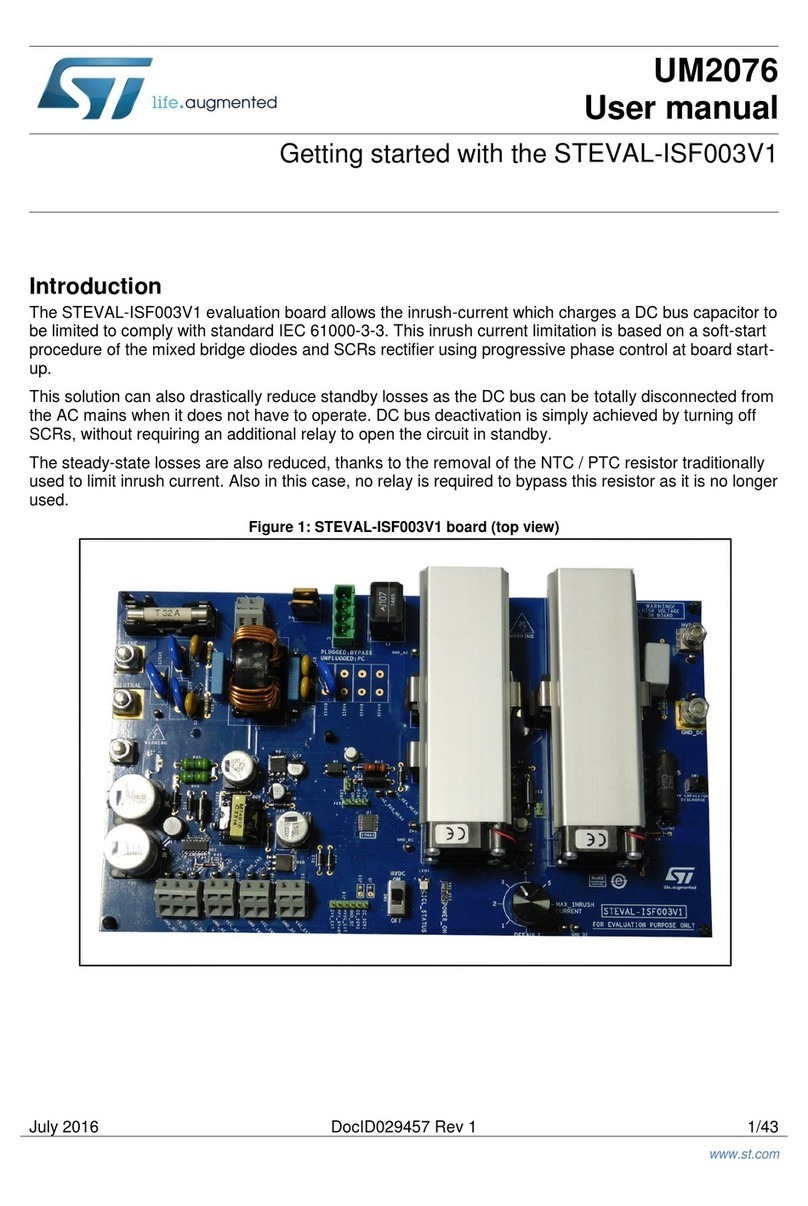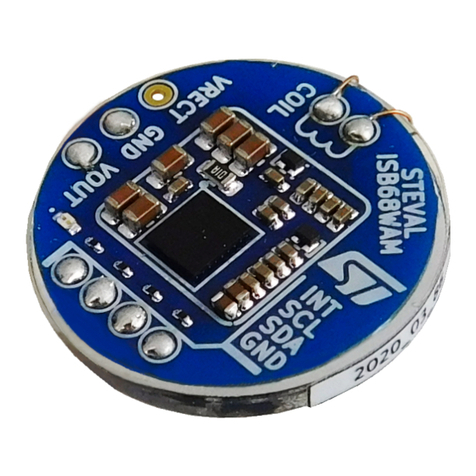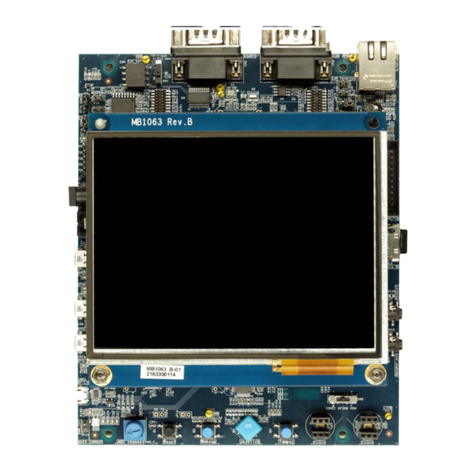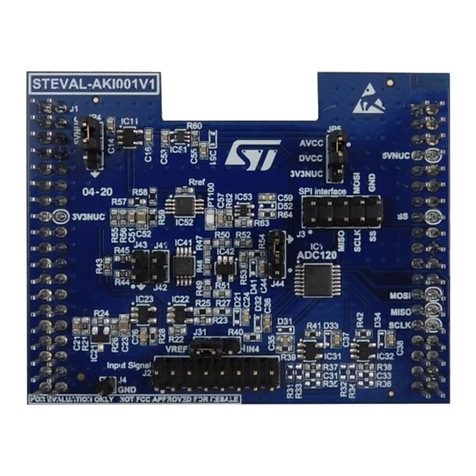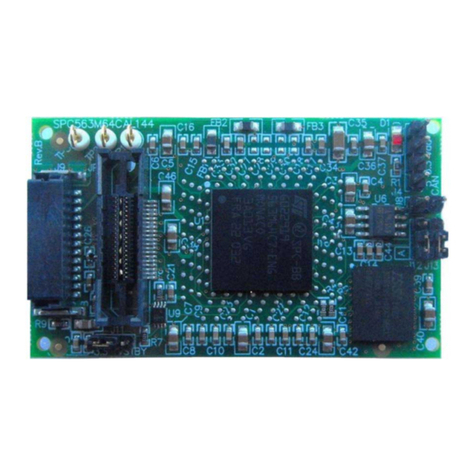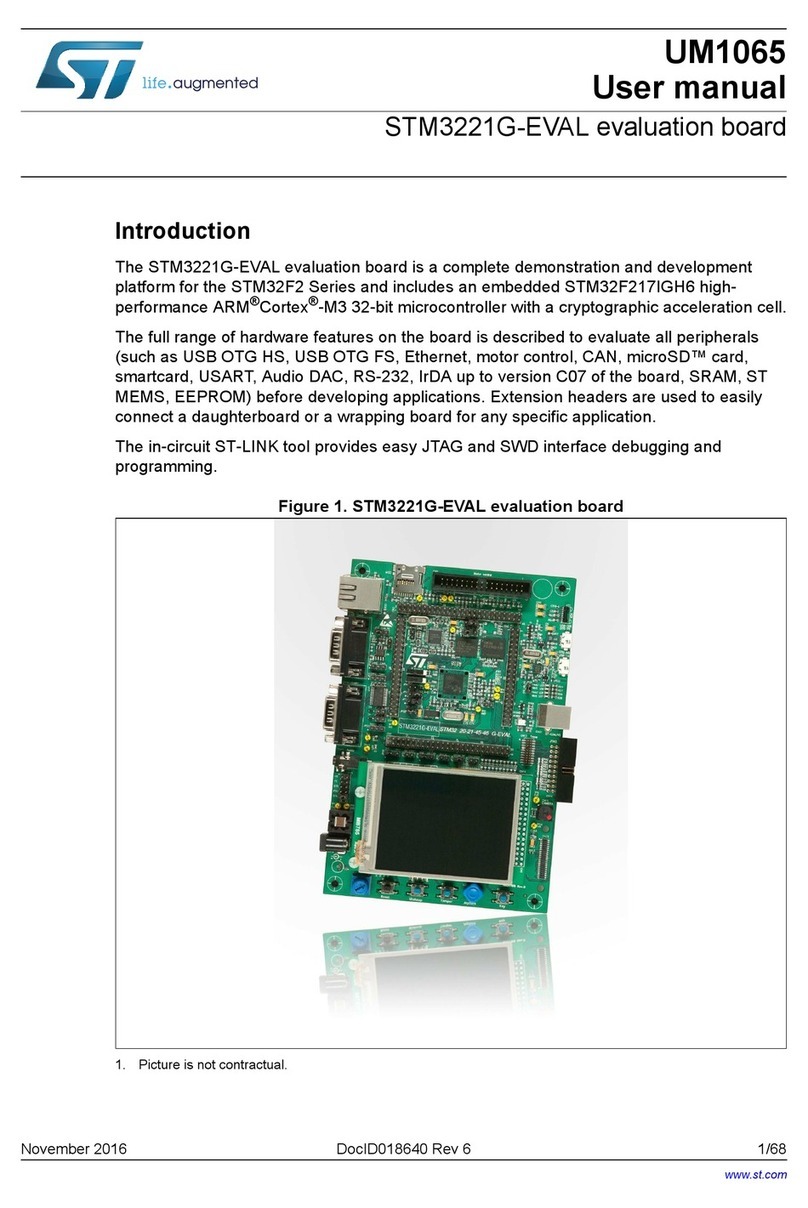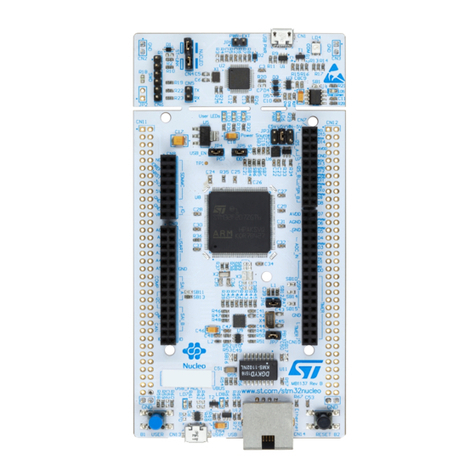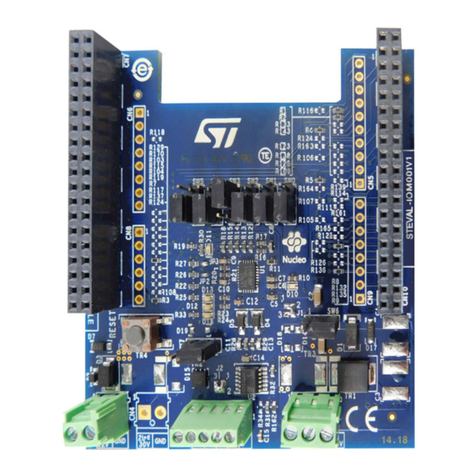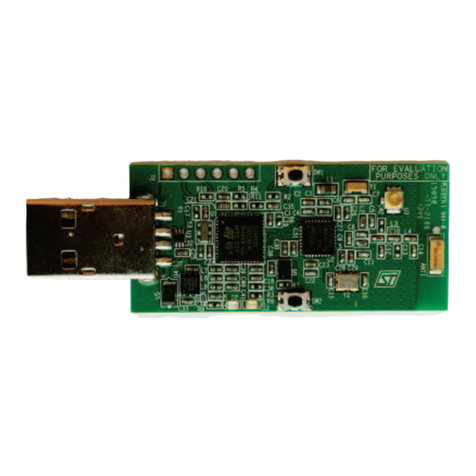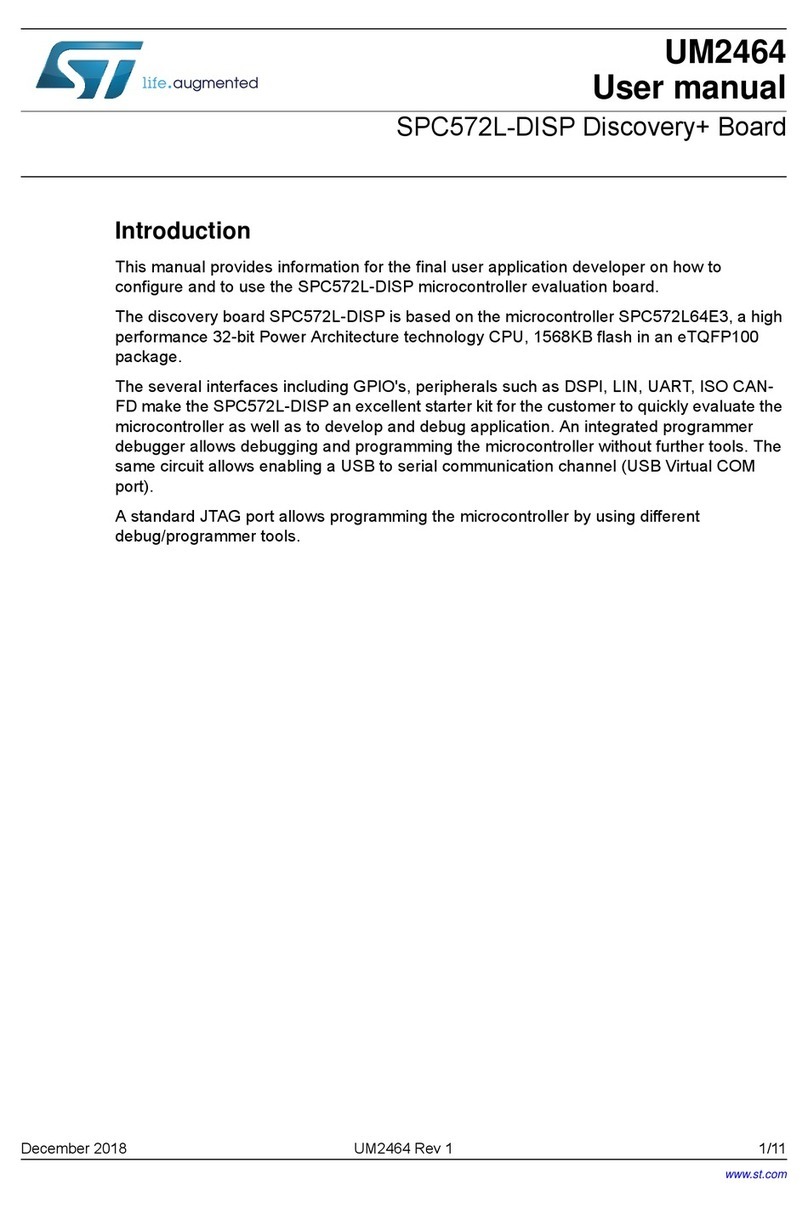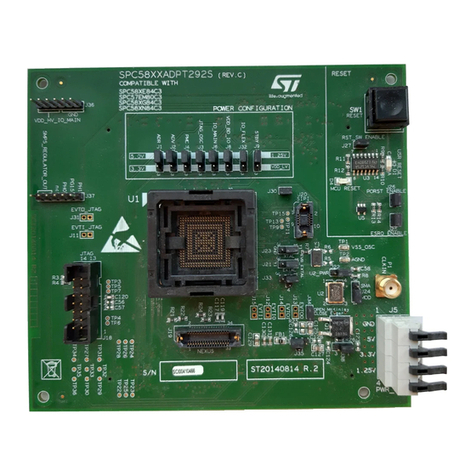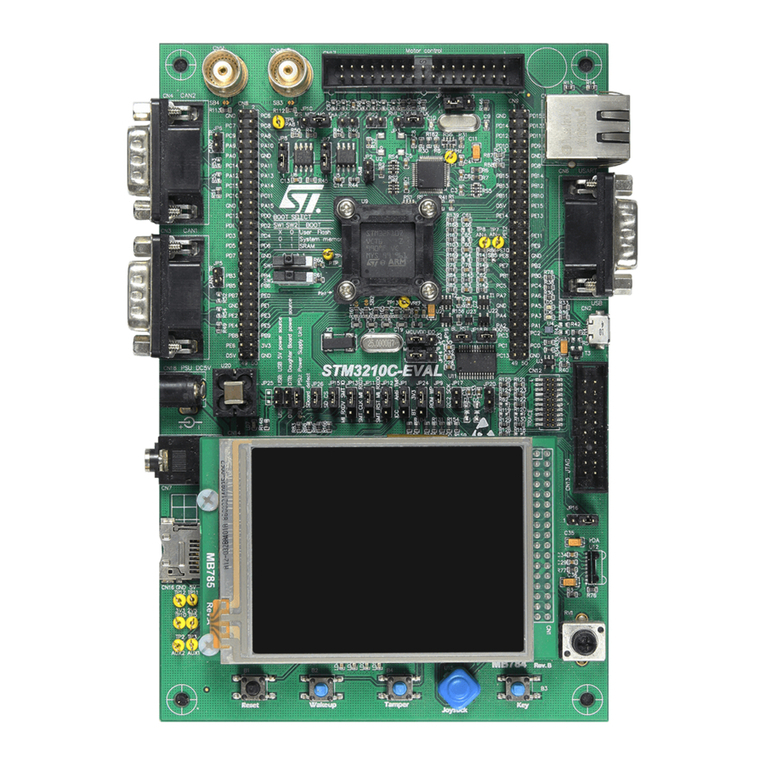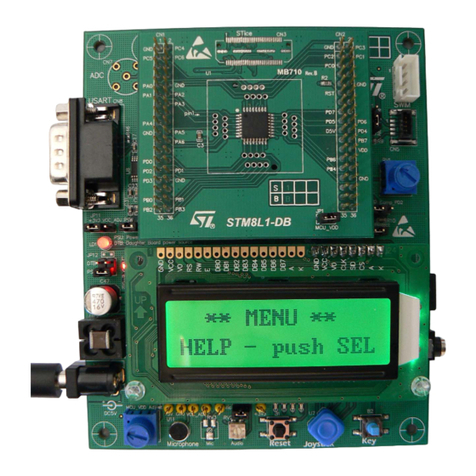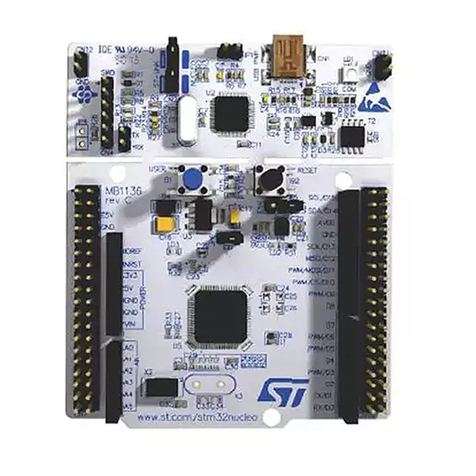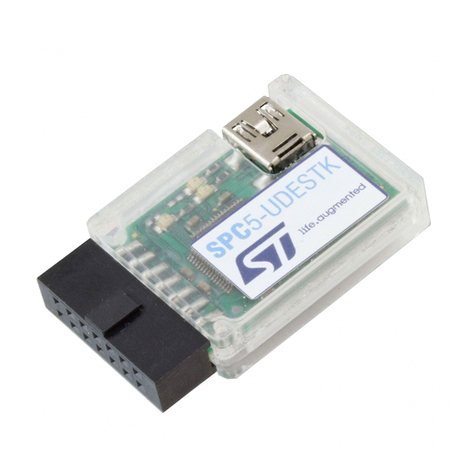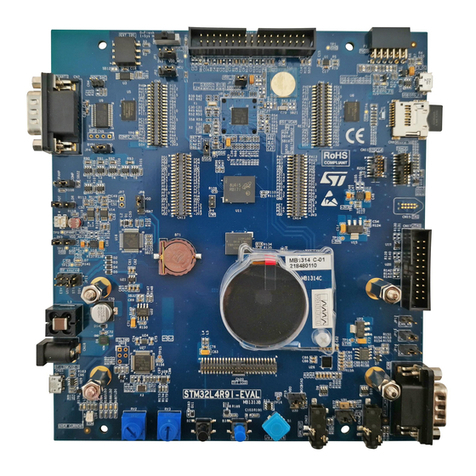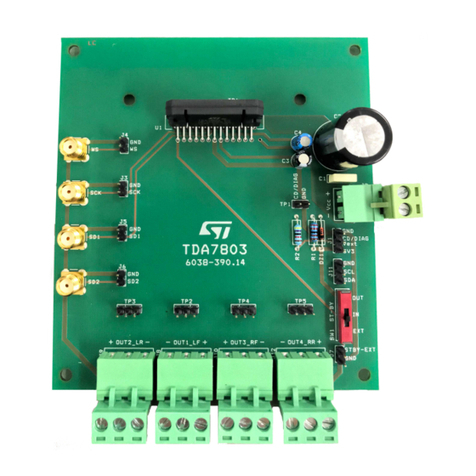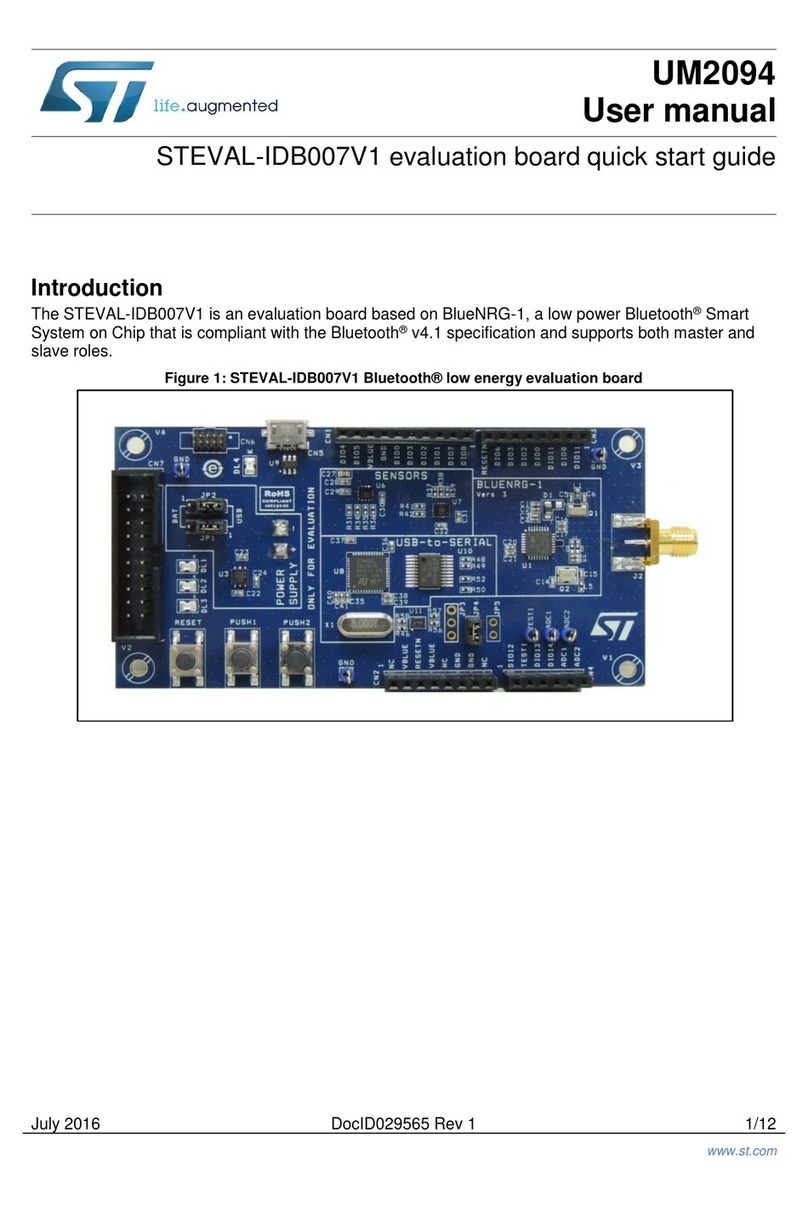8
IAR Embedded Workbench for ARM (EWARM) and Keil MDK-ARM tools
are needed for building the software applications running on the BlueNRG-
LP, BlueNRG-LPS microcontrollers.
WiSE-Studio IDE (GCC toolchain) is also supported from
STSW-BNRGLP-DK v1.1.0 or later.
Reference demonstrations applications are also provided.
NOTES:
1. The BlueNRG-LP, BlueNRG-LPS patches for IAR, EWARM and KEIL,
MDK-ARM toolchains are available on Project/Utility folder.
2. For a description of the available BlueNRG-LP, BlueNRG-LPS
demonstration applications and supported platforms, refer to
BlueNRG-LP, BlueNRG-LPS development kits user manual (Table 2.
Reference information, UM2735).
3. The BLE_SensorDemo_BlueMSapp.hex prebuilt binary image for
BlueNRG-LP, BlueNRG-LPS platforms are also provided within the
Development Kit software package, in the
Firmware\BLE_Examples\BLE_SensorDemo_BlueMSapp folder.
4
Troubleshooting
The following section reports some tips to be followed if the STEVAL-IDB011V1/STEVAL-
IDB011V2/STEVAL-IDB012V1 platform is not recognized as a CMSIS-DAP device once
connected to a PC USB port, or if user is not able to connect/debug to the selected platform
through a CMIS-DAP programmer/debug tool. STEVAL-IDB011V1 platform is used as
reference on following guidelines:
1. The STEVAL-IDB011V1 platform starts always in “MAINTENANCE” mode.
a. The USB_CMSISDAP firmware is not loaded. Follows the instructions in the
UM2735 manual (Table 2. Reference information, UM2735), section 2.9.4
“USB_CMSISDAP firmware update” in order to load the USB_CMSISDAP
firmware. Please notice that this condition is not expected , since the
USB_CMSISDAP_LP firmware is programmed at STEVAL-IDB011V1
manufacturing time.
b. The application loaded in the BlueNRG-LP device makes the device continuously
reset. Since the RTSN signal is used at the startup by the USB_CMSISDAP
firmware for choosing to start in “MAINTENANCE” mode or not, it is necessary to
disconnect the RSTN signal of the BlueNRG-LP from the USB_CMSISDAP. In
order to do it, user must perform the following steps:
1. Remove the jumper JP5.
2. Unplug the USB cable (if plugged).
3. Plug the USB cable.
4. The mass storage device “ST IDB011VX” should be present among the
devices in Windows “Devices and drives”.
5. Put back the jumper JP5 (fitted position).
6. Now user should able to use the USB_CMSISDAP firmware in order to fix the
code in the BlueNRG-LP.
2. It is not possible to connect to the STEVAL-IDB011V1, BlueNRG-LP device with the
on board CMSIS-DAP debugger/programmer.
a. The BlueNRG-LP could be under reset, or the SWD pins have been configured in
